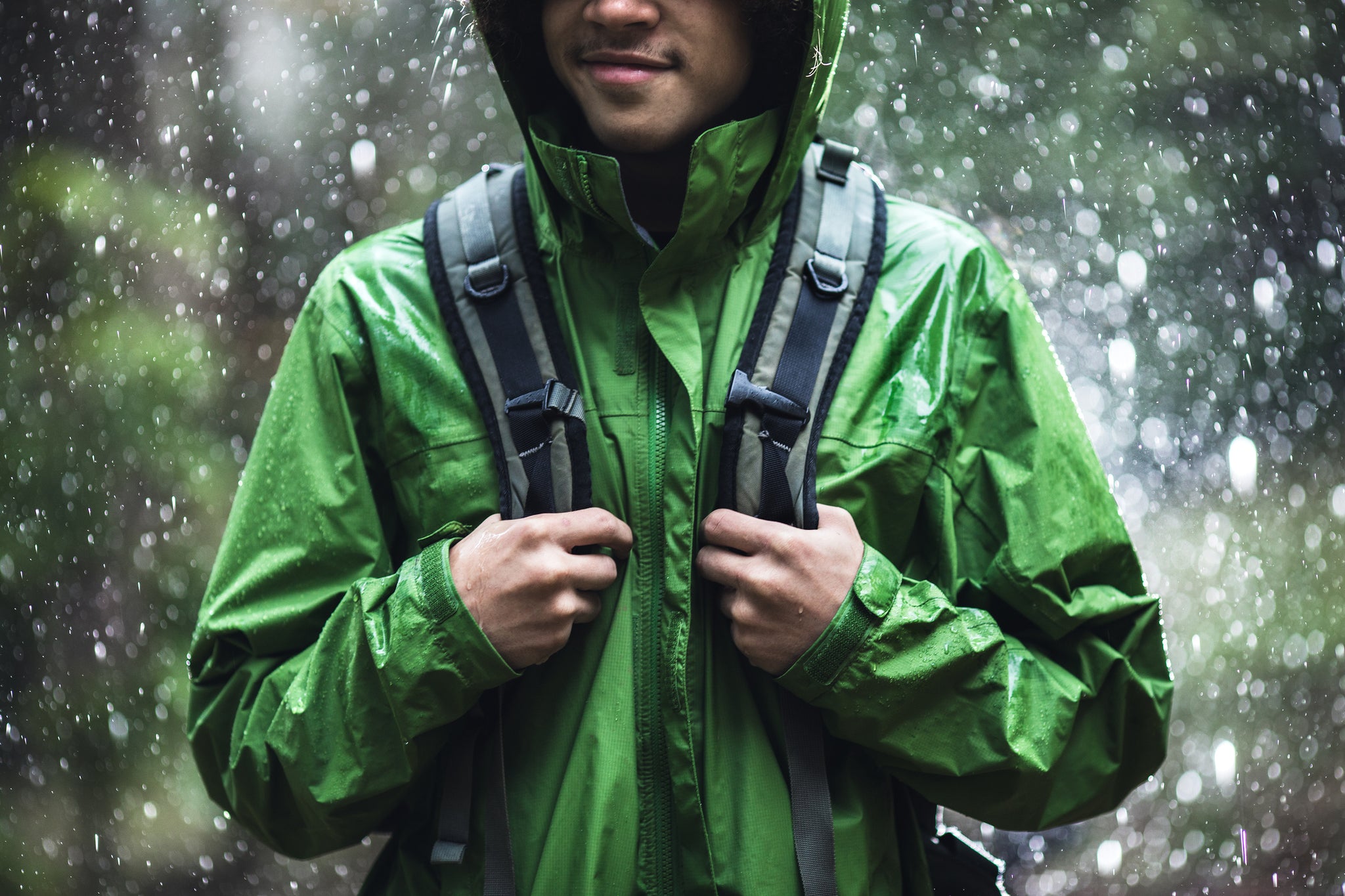Layering Up 101: 9 Key Tips

No matter where you are in the world or what adventure you're tackling, wearing the appropriate gear at the right time is essential. You want to be sure that you're dressed for whatever the world might throw at you--and these tips will help ensure that when you reach the top of the mountain, you'll be dressed just right.
Tip #1: Check the Weather
Before you head out on your latest adventure, take a look at the weather. If it's going to be a cold but clear day, you may find that you need fewer layers than if, for example, you're headed out for a long hike in cloudy, rainy weather. Before you plan your clothing for the day, make sure you know what you can expect to see out there.
The weather report will also give you a good idea of just how many layers you'll need to take along. Remember, you need to be prepared for time spent sitting around as you enjoy your destination or ride the ski lift back to the top of the mountain as well as the time when you're moving along, building up heat through exertion.
Regardless of the weather, however, you want to be sure that you're prepared for potential conditions. A short hike in good weather may still require a windbreaker, and you may find that long sleeves help protect you from wind, sun, and other challenges you'll face along your hike. You want to be comfortable, especially if you're staying close to civilization, but you also want to be able to protect yourself if the weather changes quickly. Consider potential changes in the weather for the time of year before you get dressed, and prepare accordingly.
Tip #2: Layer in Merino Wool
If you're looking for a great fabric for layering, merino wool is one of the best choices out there. Layering with wool has a number of advantages:
- It's lightweight and comfortable.
- Merino wool helps wick away moisture, so you won't end up cold and clammy when you break a sweat through your exertion.
- Merino wool is odor-resistant--which is particularly useful when you've been out working hard for hours and plan to be around people before you have a chance to change!
- Merino wool helps naturally regulate your temperature. This temperature-regulating quality helps keep you warm without overheating, which can be incredibly valuable when you're engaged in heavy exertion.
- Merino wool is easy to take care of. You don't have to worry about washing it as often as many synthetic fabrics since it is naturally stain and bacteria resistant.
- Merino wool, unlike traditional wool, has no "itch factor" that will leave you squirming and uncomfortable. In fact, it's a highly comfortable fabric that's perfect for all your layering needs.
Tip #3: Keep It Lightweight
Whether you're headed out for a day on the slopes or planning to spend the day hiking through the mountains, you know that anything you bring with you, you're going to have to carry. While puffy coats can help add an extra layer of warmth, they can also be very difficult to haul around with you all day--especially if you've already packed your backpack full. When you choose your extra layers, make sure that they're as lightweight as possible. A good layer should help hold in body heat without a lot of excess fabric.
Tip #4: Pick the Right Layers
You know you need to keep it lightweight, and you're ready to create the perfect outfit for your adventure--but what layers do you really need? There are three primary layers you should plan to wear if you're headed out for a cooler weather adventure. If it's going to be particularly cold, you may want to add a layer or two along the way; however, your layers should incorporate:
The inner layer. This is the layer closest to your skin. Its goal is to wick moisture off of your skin, preventing you from becoming cold and clammy when you stop moving. Wool makes a great inner layer because it can hold up to 30% of its weight in moisture before you'll even begin to feel cold.
The middle layer. When you think of layering, the middle layer is one of the most important layers. The middle layer traps your body heat inside, keeping you warm and cozy even if you're out in the elements for long periods of time. Your middle layer may actually consist of multiple pieces of clothing, especially if you expect to encounter large temperature changes during your adventure. Fleece, down, and other synthetic fibers often make great middle layers due to their insulating properties. The colder the temperatures you anticipate on your adventure, the thicker and heavier your middle layer may need to be.
The outer layer. Your outer layer should help trap that heat from the middle layer as it protects you from wind and rain. The outer layer is often a shell or other material that will help keep moisture off, especially if you're going to be out in the rain.
Keep in mind that your goal, when adding in layers, is to avoid changing layers if at all possible. You want to be comfortable in the temperatures you expect to encounter on your journey, rather than constantly needing to change your clothes.

Tip #5: You Don't Have to Wear Them All at Once
When you first put on your layers, you may feel a little uncomfortable--including uncomfortably warm. Of course, if you get dressed indoors and head out into freezing temperatures, you're certainly going to feel a little out of sync with your environment. Even once you're outside, however, you may not need all those layers to keep you comfortable.
With a good layering setup, you can easily add and remove layers. If there's no wind, for example, you might take off that top jacket. Standing around and getting a little overheated? Remove the middle layer, then put the jacket back on. The best part of layering is that you can make it work for you. You have plenty of options for what you're wearing right there, at your fingertips.
Tip #6: Don't Ignore Your Lower Body
Many people assume that no matter what they're doing, a good pair of jeans or athletic pants is enough to protect their lower body. Layer in some good socks and you're good to go, right?
Not always.
Depending on the conditions, you may find that thermal underwear or a merino wool base layer helps add a layer of warmth and keeps moisture off of your skin at the same time. Look for a base layer that's comfortable and will help reduce chafing, especially if you plan to be out for a while or need to work in cold conditions. Lightweight, waterproof pants are also more appropriate for activities like skiing or hiking than jeans. Look for puncture-resistant fabrics that will stand up to the extreme conditions you expect to encounter.
Tip #7: Remember Your Extremities
You've taken the time to pack diverse layers that will help keep you warm and protected. You still, however, need to pay attention to your hands, feet, and head. Check the weather and choose a hat that will help keep you warm. Remember, a large percentage of your body heat escapes through your head, so you want to make sure you keep it warm and toasty! A good hat will also help wick moisture away as you get hot and sweaty as well as helping you maintain your temperature so that you don't get too hot, especially if you're headed off on a particularly active adventure. Wool is a great choice for your hat, gloves, and socks, since it can help keep you warm and toasty while still avoiding overheating.
Even in warm weather, pay attention to your extremities as you're packing your gear. You'll still need a hat, even in the sun: aim for something with a wide brim that will help keep you cool. Your socks are particularly important if you're hiking in the rain: you need thick, water-resistant coverings that will help keep your feet dry and prevent blisters. Wool socks are a great choice for hikers new and old.
Tip #8: Consider the Rest of Your Gear
For long hikes and camping, especially if you're concerned about rainy conditions, nothing beats a poncho tarp for helping to keep you dry. Look for a breathable material that is rated to extreme wind and temperatures. Keep in mind that no material will keep you completely dry if you're exposed to wind and rain long enough, so make sure you have a change of clothes that will allow you to get dry again. You may consider carrying an umbrella as well.
Tip #9: Try to Avoid Stops to Change Layers
While the great thing about layering is its versatility, when you get dressed for your adventure, try to avoid stopping to change layers any more often than necessary. When you change, you lose some of the body heat you've built up--not to mention taking time away from your endeavors. Look for clothing that is comfortable in a range of temperatures. It may take time to discover exactly what works best for you, but keep experimenting until you find a combination that is comfortable even if the temperature shifts.
Do you have the layers you need for the weather? No matter what adventure you're headed out on, Meriwool Layers can help provide that wicking layer closest to your skin that will help wick away excess moisture and keep you dry and comfortable. Contact us today to learn more.
Written by: Emily Goodman



